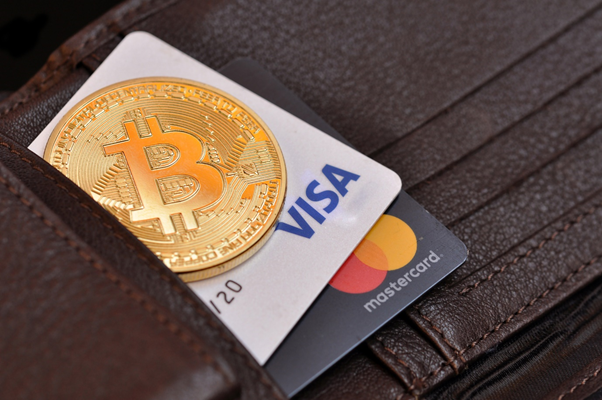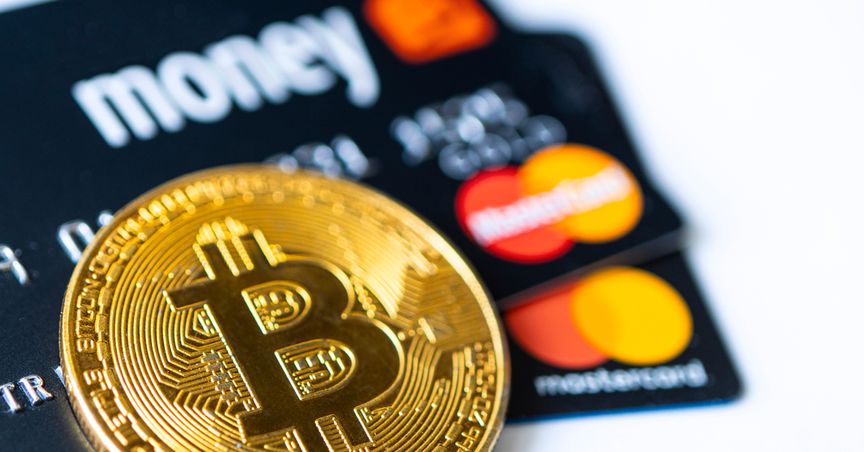Summary
- Crypto credit and debit cards are physical cards that operate in much the same manner as a regular credit or debit card. The only difference being crypto cards use cryptocurrency to pay for goods and services.
- Later this year, Bitcoin will release its own primary rewards card in the US. These cards will also permit users to spend their crypto, making it a must-have accessory for crypto owners.
- Visa will introduce the first Australian crypto card, allowing users to spend Bitcoin using a physical card.
- One of the main benefits of having a crypto card is that the user can pay for goods and services without paying fees to convert the crypto into fiat.
With all the talk of cryptocurrency trading and investing occupying the finance pages of late, it’s easy to overlook that the whole purchase of crypto originally was to pay for goods and services in something other than fiat currency.

Source: © Mkarco | Megapixl.com
When the first Bitcoin blockchain was created, it promised a decentralised, peer-to-peer currency revolution – an option deemed as necessary following the Global Financial Crisis of 2008. As such, Bitcoin allowed users to pay for goods and services via certain websites, mainly on the dark web.
Fast forward to 2021, and not only have some mainstream companies started accepting cryptocurrency as payment for their products, but users can also now use crypto cards to pay for goods and services.
What Are Crypto Cards?
Crypto credit and debit cards are physical cards that operate in much the same manner as a regular credit or debit card. The only difference being crypto cards use cryptocurrency to pay for goods and services.
That being said, it should be noted that transactions using crypto cards don’t use crypto directly. Instead, the crypto is converted to fiat before the transaction is carried out.
Visa and MasterCard distribute crypto cards, so crypto payment is accepted at any store accepting Visa and MasterCard.
Alternatives to Visa and MasterCard
Before Visa and MasterCard offering crypto cards, the earliest incarnation of crypto cards was offered by digital currency exchange, Coinbase, called the Shift Card. This card pulled money directly from the user’s Bitcoin balance. However, the user was restricted to a US$1000 daily spending limit and a US$200 maximum ATM withdrawal limit.
Later this year, Bitcoin will release its own primary rewards card in the US. These cards will also permit users to spend their crypto, making it a must-have accessory for crypto owners.
Crypto Card Spending in 2021
2021 has already seen a reported US$1 billion in spending so far on Visa crypto cards. Visa announced this last Wednesday as its first half-yearly report.
Although this may sound like a lot, it’s small fish when compared to the US$11 trillion per year consumers spend with regular Visa cards.
Visa is now partnered with more than fifty crypto companies and is part of an effort on the credit firm’s behalf to combine the world of crypto with traditional banking.
Visa offers two different crypto cards: the first being a card that allows users to convert crypto into fiat and the other, which allows users to earn crypto rewards by spending fiat currency.
Australian to Introduce First Bitcoin Card
Visa will introduce the first Australian crypto card, allowing users to spend Bitcoin using a physical card.
Users will be able to pay using their crypto card at retail stores as well as hospitality venues using the CryptoSpend app.
The CryptoSpend app was developed by two mates who met at the University of Technology Sydney. The co-founders, Andrew Grech and Richard Voice, convinced Visa to issue the crypto card based on the belief that crypto holders would happily spend their digital currency on goods and services if they were allowed to do so. Their belief is spending crypto directly is a more convenient way of selling it.
This perspective runs counter to the Reserve Bank of Australia, which are yet to embrace digital currency's potential, labelling it a “poor store of value”.
The two founders went through an intensive process to ensure the CryptoSpend app protects the privacy of its users. Moreover, Visa wanted to make sure the app protects against money laundering and other illegal activities.
The card will allow its users to spend Ripple, Bitcoin cash and Ethereum’s Ether, and will be issued by ASX-listed company Novatti (ASX:NOV). The card is due for release in September.

Ethereum Credit Card (Source: © Staberas357 | Megapixl.com)
What are benefits of crypto cards?
The boom in cryptocurrency over the last 12 months, in particular, makes crypto cards quite a handy prospect.
One of the main benefits of having a crypto card is that the user can pay for goods and services without paying fees to convert the crypto into fiat.
The waving of fees is available to users who spend under the given threshold in 12 months. Moreover, the waiving of fees includes the waiving of foreign exchange fees.
Additional, like credit cards, crypto cards offer rewards to their users. As such, the user receives bonus coins if they spend over a certain amount. Compared to regular cashback, what is notably beneficial about this is that crypto bonus rewards can potentially rise in value.
However, there are two sides to this coin (so to speak). Due to the notorious volatility of digital currency, crypto rewards can potentially go down after the customer receives them. Therefore, over the short term, crypto rewards can be potentially futile.
Regardless the introduction of crypto cards is a huge step forward for cryptocurrency as it moves further into the mainstream.
INTERESTING READ:



